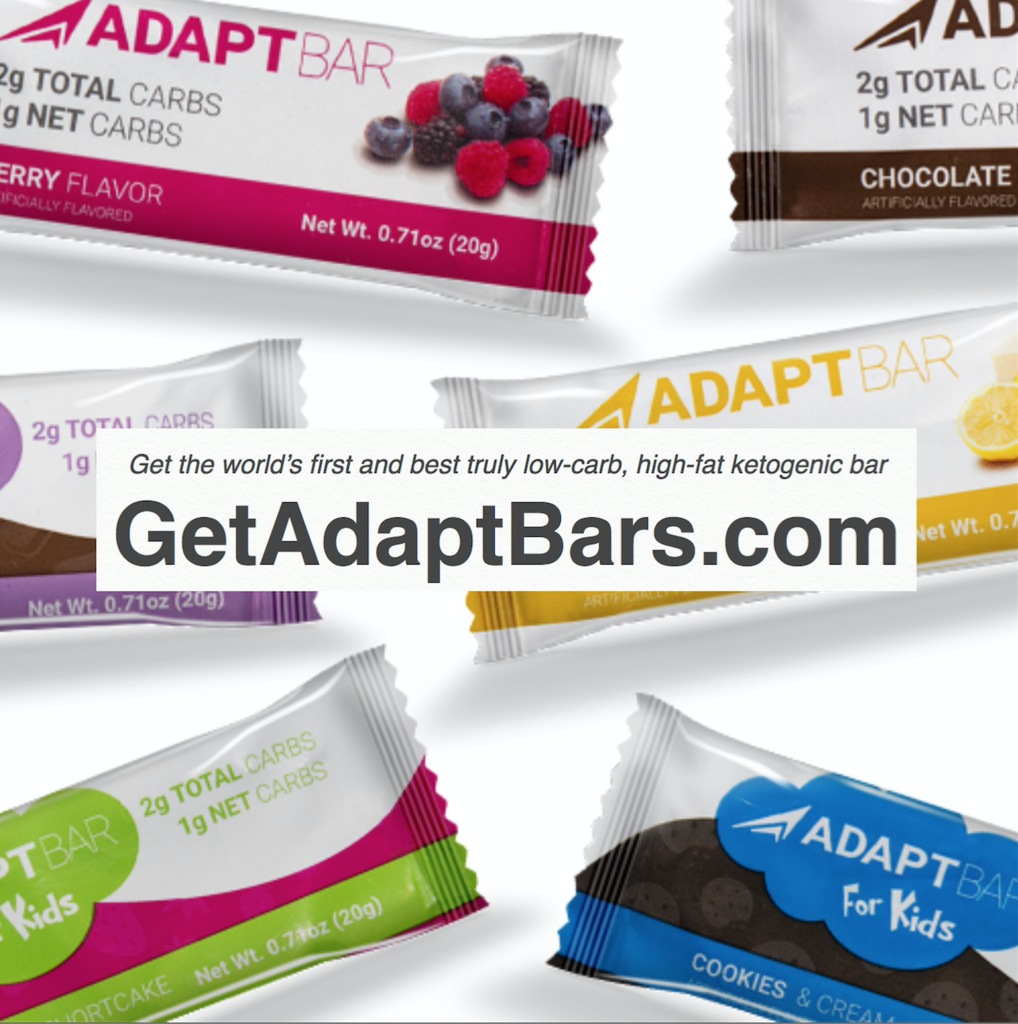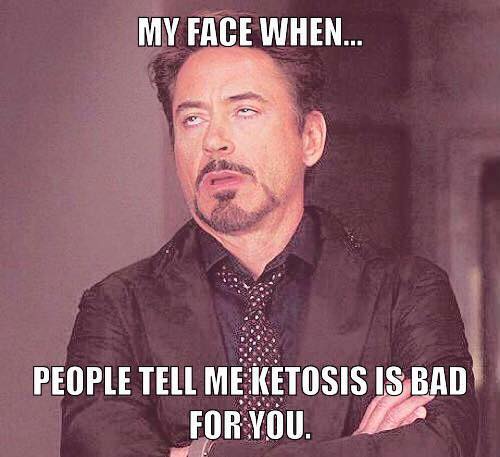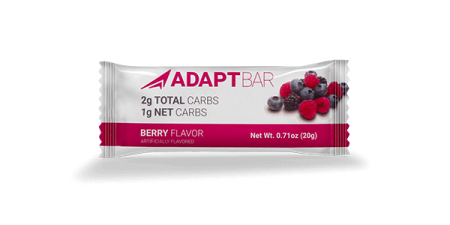The COVID-19 spike protein is responsible for serious clotting disorders being seen more and more often. This is happening so much that morticians are now commenting about the record number of “rubber-like” bands being pulled from people’s vascular systems upon starting the embalming process.

I’ve personally seen at least 50 cases over the last two years where patients present with profound fatigue, SOB, abdominal pain, diarrhea and extremity pain post vaccination with no really clear explanation in the medical literature until now. Patients exposed or vaccinated are having these symptoms linger for as long as 24 months.
A large scale cohort UK study based on 48 million adults in England and Wales found that in the first week after a COVID-19 diagnosis, the risk of an arterial blood clot was nearly 22 times higher than in someone without COVID-19, and 33 times higher for those with a venous clot condition.
A clot in the artery is the kind that could cause a heart attack or ischemic stroke by blocking blood flow to the heart or brain. That’s different from a clot in the vein leading to a clot in the lung. Though we are seeing both in escalating numbers.
An estimated 10,500 additional cases of clot-related problems, i.e. about 7,200 additional heart attacks or strokes, and 3,500 additional cases of pulmonary embolism, deep vein thrombosis, or other venous problems was identified in this British study alone. Even though that risk drops sharply to less than four times higher than someone without COVID in the second week, it remains high (2x) even up to 49 weeks after the initial diagnosis. This is especially so in regards to the risk of blood clot formation in the legs (deep vein thrombosis or DVTs).
It’s All Due to the Spike Protein
The spike protein that the virus is wrapped in and that the vaccine causes to be replicated in your RNA is the actual trigger for the clotting cascade. It’s the reason I called it the ‘clot shot” last year and now we know it increases clotting in three different mechanisms.
The nasty little virus, SARS-CoV-2, enters our cells via a fancy little protein receptor call the angiotensin-converting enzyme 2 (ACE2). And, not so lucky for them, Endothelial cells (ECs), express an abundance of ACE2. ECs reside on the inner surface of every blood vessel across our entire body, making them a direct target of the virus infection.
Many other cells, including lung epithelial cells, enterocytes lining the small intestines, and cardiac pericytes, all express ACE2.
Spike proteins don’t only activate epithelial cells (EC) and promote localized inflammation. They also promote systemic inflammation as ACE2 is almost everywhere inside our major organs and tissues. And, this coding literally gets written into the DNA.
This leads to more pro-inflammatory genes getting expressed. More and more immune cells are attracted and sent to the injured or infected tissues (vessels in the lung, heart, gut, etc).
A number of downstream events occurs contributing further to the clotting cascade:
- Complement-mediated inflammation of epitheliums (endothelialitis): Spike proteins docking on ACE2 ECs activates the complement pathway and coagulation cascade, resulting in a systemic endothelialitis (lung injury) and procoagulant state (tendency to develop blood clots).
- As the complement destroys the endothelium, the procoagulant von Willebrand factor (vWF) and FVIII are released. A significant increase of vWF can form multimers that promote thrombus growth. vWF is secreted mainly from endothelial cells and from a-granules of platelets (megakaryocytes derived). This is comparable to the string in the “beads and string” of a necklace where the beads represent platelets.
- Platelet storm: Platelets are a small fragment of the megakaryocytes. The complement anaphylatoxins C3a and C5a activate platelets and increase the production of tissue factor further promoting a clotting forming state. ACE2 receptors are present on platelets, and this may contribute to the massive platelet aggregation, which is a characteristic of severe COVID-19 infection.
- Activation of neutrophils leads to formation of neutrophil extracellular traps (NETs), a process sometimes referred to as NETosis, which contributes to thrombosis.
- EC injury is compounded by toll-like receptor (TLR) activation by viral RNA recognition, with resulting increased reactive oxidative species (ROS) production. The increased ROS further upregulates the expression of vWF. The DNA expression of clotting sensitivity is literally turned up.
- Spike proteins can induce expression and secretion of a series of clotting proteins which cascades into the clotting process, including factor (F)-V, thrombin, and fibrinogen to promote clotting process.
Spike Protein Impairs Regulation of RAAS – Leading to More Clots
Now if all of the above wasn’t bad enough, because the spike protein directly interacts with ACE2 expression, COVID-19 patients showed an elevated level of serum angiotensin II indicating a dysregulation of the RAA system (renin angiotensin aldosterone system, or RAAS).
Traditionally, people think angiotensin II is a neurohormone that stimulates the constriction of vascular smooth muscle cells and is responsible for salt and water balance, controlling blood pressure. However, there have been abundant studies supporting the idea that angiotensin II is capable of initiating and upregulating inflammatory responses, worsening the clotting state.
In a normal immune response, these mechanisms help to calm down the local injury, with subsequent healing and returning to a resting EC state.
However, for predisposed COVID-19 patients or vaccinated patient, the factors strengthening clot formation can over power the normal healing mechanisms, all of which lead to an escalating thrombotic cascade.
The Birth of a COVID Clot (it’s like a TV Soap Opera story)
The spike induced endothelial disruption leads to massive amounts of vWF release. Then a subsequent platelet storm happens leading to hypoxia induced upregulation and activation of vWF. What follows is a fibrous network from neutrophil extracellular traps (NETs), as well as increased angiotensin II levels, all adding up to initiate thrombogenesis. In a nutshell, the spike protein drives the formation of the clot through six different dysregulated mechanisms and is the beginning of the long rubbery clots in the arterial system of the body. Furthermore, the upcoming second scene takes another pivotal part in the whole story.
A COVID vaccine instructs the cells to produce large quantities of spike proteins. Normal biochemical and physiological processes are “hijacked” in order to make an abnormal amount of these spike proteins. Again, your DNA is hijacked to make more spike protein. Did you know that?
These abnormal amounts of spike protein have more surprising direct effects on clots.
Spike Proteins Directly Disrupt the Clot Dissolving Mechanism
In a normal healthy person, the body will, in the presence of a blood clot, break the clot down by a process of fibrinolysis. This is a natural healing and balancing mechanism to prevent an abundance of blood clots.
During this process, Tissue Plasminogen activator (TPA, coming from the endothelium) helps plasminogen change into plasmin and then this causes the generation of d-dimer (a small protein fragment left when a blood clot dissolves). This is the flag telling us that the clot dissolving mechanism is broken. This is what I commonly measure every 2-4 weeks in these patients. Interestingly, these patients symptoms resolve once the d-dimer is normal.
Every one of my 50 patients has had D-Dimers elevated for 6-24 months.
It has been discovered that fibrinogen in blood can clot into an abnormal “amyloid” form of fibrin that (like other β-rich amyloids and prions) is relatively resistant to proteolysis (fibrinolysis). This is essential amyloid that is hard to remove.
This has been and is strongly seen in the platelet-poor plasma (PPP) of individuals with long COVID and post vaccination long haul syndrome. What is scary is that the extensive fibrin amyloid microclots can persist.
In a recent study by Grobbelaar published in Bioscience Reports in August 2021, the biomarker S1 (or the intruding part of the spike protein) alone can induce fibrin resistance to fibrinolysis, leading to unopposed microclot formation.
When spike protein S1 was added to healthy PPP, it resulted in structural changes to β and γ fibrin(ogen), complement 3, and prothrombin. These proteins were substantially resistant to trypsinization in the presence of spike protein S1.
Hence, the results suggest that the presence of spike protein in circulation may contribute to the hyper-clotting status, and may cause substantial impairment of the clot dissolving process.
Such lytic impairment may result in the persistent large microclots that people have reported and which have been found in plasma samples of COVID-19 patients.
These microclots block up capillaries, and thus to limit the passage of red blood cells, and hence oxygen exchange, which can actually underpin the majority of these symptoms.
Spike Proteins Form Amyloid-Like Substance
Furthermore, to everyone’s surprise, the spike proteins are identified to present seven amyloidogenic sequences and are able to form amyloid-like substances.
In other words, these spike proteins are similar to those beta-amyloid or tau or alpha-synuclein like substances which may cause neuronal loss in Alzheimer’s or Parkinson’s disease. Their structure makes it easy to form tighter string-like bonded structures with longitudinal twisting as well as cross binding, forming a fibrous-like structure visible under the microscope.
Researchers have found that plasma samples from long COVID patients still contain large anomalous (amyloid) deposits (microclots), which are resistant to fibrinolysis (compared to plasma from controls and diabetes), even after trypsinization (cell dissociation after an enzyme breaks down proteins).
After a second trypsinization, the persistent pellet deposits (microclots) were solubilized. Various inflammatory molecules substantially increased in both the supernatant and trapped in the solubilized pellet deposits of COVID-19, versus that of the control samples.
Of particular interest was a substantial increase in α(2)-antiplasmin (α2AP), various fibrinogen chains, as well as Serum Amyloid A (SAA) that were trapped in the solubilized fibrinolytic-resistant pellet deposits.
Significant abnormal amyloid microclot formation that are resistant to fibrinolysis, increased α2AP, and the surge of acute phase inflammatory molecules may therefore be central contributors in both COVID-19 infection and as well as COVID vaccine-related syndrome.
Spike Protein Inhibits Another Anti-Clot Mechanism
Spike protein just keeps presenting one surprise after another.
It’s been reported that the spike protein can competitively inhibit the bindings of antithrombin and heparin cofactor II to heparin, causing abnormal increase in thrombin (clotting) activity. SARS-CoV-2 spike proteins at a similar concentration (~10 μg/mL) as the viral load in critically ill patients can directly cause blood coagulation and thrombosis in the zebrafish model.
These unexpected negative effects of spike protein on the dissolving process of blood clots, including its amyloid nature, all may be the key contributory factors to the abnormal, lengthy fibrous clots observed in COVID-related conditions.
The Spike Protein Is the Smoking Gun
There is clinical evidence that the SARS-CoV-2 spike protein has been detected in clots retrieved from COVID-19 patients with acute ischemic stroke and myocardial infarction.
Recent research conducted by cardiologists from the University of Colorado sheds light on the crucial role of spike protein in the pathology of COVID and COVID vaccine-related injuries.
They analyzed seven COVID-19 patients and six mRNA vaccinated patients with myocardial injury and found nearly identical alterations in gene profiling patterns that would predispose them to clotting state, inflammation, and myocardial dysfunction.
In other words, regardless of whether the myocarditis was caused by the virus or vaccine, the expression of genes responsible for prothrombotic state was turned on in response to the spike protein, and inflammation and myocardial dysfunction exhibited similar changes.
Based on gene analysis, COVID-19 and post-mRNA vaccine injury have a common molecular mechanism. The altered genes pattern includes down-regulation in ACE2, ACE2/ACE ratio, AGTR1, and ITGA5, and up-regulation in ACE and F3 (tissue factor).
What is more alarming, and not previously reported, is that microvascular thrombosis has been found in post-vaccinated patients, indicating that spike protein itself is able to trigger blood clots in susceptible patients.
The Tip of the Iceberg?
Unfortunately, this may only be the beginning. The AstraZenica COVID adenovirus (ChAdOx1-S) vaccine pulled from the marked caused antibody (auto-immune) formation to platelet factor 4 (PF4). Auto-immunity can take years to form before it is recognized.
These unusual blood clots in combination with thrombocytopenia were reported predominantly in women aged under 60 years. Accordingly, several European countries restricted the use of adenovirus vaccines in younger age groups.
This risk has been recently systematically analyzed in an international network cohort study from five European countries and the United States, confirming pooled 30 percent increased risk of thrombocytopenia after a first dose of the ChAdOx1-S vaccine, as well as a trend towards an increased risk of venous thrombosis with thrombocytopenia syndrome after Ad26.COV2.S (the Janssen COVID vaccine) compared with BNT162b2 (the Pfizer-BioNTech COVID vaccine).
What Works to Detoxify the Spike Protein?
I’ve listed my go-to medications below in the order of effectiveness in my clinical experience.
Ivermectin – Ivermectin is a compound that originated from nature. Satoshi Omura, a Japanese microbiologist and organic chemist, who grew up in a farmer’s family, discovered from soil samples the predecessor compound of ivermectin, Streptomyces Avermectinius, and modified it into ivermectin.
Ivermectin has been in use for more than 50 years. Ivermectin was first used in the treatment of parasitic diseases, such as onchocerciasis, river blindness, and elephantiasis.
In addition to treating parasites, in vitro cellular experiments have revealed that ivermectin has broad-spectrum antiviral effects. It can be used to fight against RNA viruses (including HIV, the dengue fever virus, influenza viruses) and DNA viruses.
In addition, ivermectin has a variety of antiviral mechanisms. It can also inhibit viral entry into cells and viral protease function, thus blocking viral replication.
A study published in the journal In Vivo found that ivermectin might interfere with the attachment of spike protein to the human cell membrane.
In an in vitro study on ivermectin published in Antiviral Research, the researchers added ivermectin to cells infected with the SARS-CoV-2 virus and then harvested the supernatant and cell pellets for further analysis. It was revealed that within 48 hours of adding 5 μM ivermectin, the viral SARS-CoV-2 RNA was reduced by 99.999 percent, leaving only 0.001 percent.
A prospective, observational study of the citywide COVID-19 prevention with ivermectin program was conducted between July 2020 and December 2020 in Itajaí, Brazil.
In the absence of contraindications, ivermectin was offered as an optional treatment to be taken for two consecutive days every 15 days at a dose of 0.2 mg/kg/day.
Of the 223,128 citizens of Itajaí considered for the study, a total of 159,561 subjects were included in the analysis: 113,845 (71.3 percent) regular ivermectin users and 45,716 (23.3 percent) non-users. The main findings are: The regular use of ivermectin at 0.2 mg/kg/day for 2 days every 15 days led to a 68 percent reduction in COVID-19 mortality (0.8 percent versus 2.6 percent among ivermectin non-users; p < 0.0001). There was a 56 percent reduction in hospitalization rate (p < 0.0001).
Minocycline – Doxycycline or Minocycline may stop the cytokine storm produced by this segment of spike protein superantigen activity ( Francini E, Miano ST, Fiaschi AI, Francini G. Doxycycline or minocycline may be a viable treatment option against SARS-CoV-2. Med Hypotheses 2020;144:110054. doi: 10.1016/j.mehy.2020.110054. Available at: https://tinyurl.com/bddyrfx2. Accessed May 19, 2022.)
Colchicine – (Colcrys) for pericarditis: colchicine is indicated for the treatment and prevention of gout, though it is also generally considered first-line treatment for acute pericarditis, as well as preventing recurrent episodes. Colchicine has been effective in lowering the d-dimer through it’s effect on improving inflammatory cascades. Although the exact mechanism of colchicine is not fully understood, its anti-inflammatory effect for pericarditis appears to be related to its ability to inhibit microtubule self-assembly, resulting in decreased leucocyte motility and phagocytosis Colchicine is a nonsteroidal antimitotic drug that blocks metaphase by binding to the ends of microtubules to prevent the elongation of the microtubule polymer. This agent has proven useful in gout and idiopathic recurrent pericarditis. The GRECCO-19 randomized open-label trial in 105 hospitalized patients with COVID-19 found that colchicine was associated with a reduction in D-dimer levels and improved clinical outcome.
NAC (N-acetyl-L-cysteine) – This drug is a well-established expectorant, which is able to reduce the stickiness of sputum, as well as an antioxidant.
Although it’s unable to interfere with the binding of spike proteins to ACE2 receptors, it reduces the oxidation of spike proteins after they enter the cells. As a neutralizing agent, it can reduce the consequences of toxicity after poisoning.
A cell model study published in the journal Circulation Research found that the expression of some normal proteins, such as phospho angiotensin-converting enzyme (pACE2), ACE2 and AMP-activated protein kinase (AMPK), decreased in pulmonary artery endothelial cells infected with pseudo-spike proteins, while the expression of the bad protein MDM2 (which promotes tumor formation) increased.
NAC, on the other hand, has a restorative effect on cells. It’s able to restore cells damaged by spike proteins to almost the same state as normal cells.
As there is no direct clinical trial data to confirm the effects on reducing the spike protein toxicity, an instruction under a doctor’s advice must be followed.
Catechin and Curcumin- Catechin, a tea extract, is a natural antioxidant that accounts for about 75-80 percent of the polyphenol content of tea and is one of the sources of the bitterness of tea.
Curcumin, derived from turmeric, is an important component of curry. Curcumin has powerful antioxidant and anti-inflammatory properties.
An article published in Scientific Reports – Nature studied these two components and found that curcumin binds to the receptor-binding domain of spike proteins; and catechin binds to amino acids near the receptor-binding domain, thus blocking spike proteins from binding to the ACE2 receptors and blocking spike proteins from entering cells.
These two ingredients can inhibit viral invasion of cells at the body’s first natural immune barrier, guard the cell’s gateways and offset the strength of the virus.
Carpenter’s Herb – Carpenter’s herb (Prunella vulgaris) has long been considered an effective medicine for liver health.
In 2021, a study by Canadian infectious disease researchers was published in the Public Library of Science: General (PLOS ONE). It proved that the water-soluble extract NhPV of the natural plant carpenter’s herb can inhibit the SARS-CoV-2 and block it from infecting cells. Some other herbs, such as pine needles, emodin, neem, and dandelion leaf extract, are also mentioned in the WCH guidelines as having similar effects in relieving the toxicity of spike proteins. Increasingly, scientific studies are finding that there are more herbal ingredients that have inhibitory effects on the SARS-CoV-2 and can repair the damage caused by vaccination. For instance, scientists have selected 25 candidate compounds from the giant knotweed (Reynoutria sachalinensis) and docked them into the binding site of Mpro, the main protease of SARS-CoV-2. They discovered that 11 of these compounds were effective in inhibiting the replication and transcription of the SARS-CoV-2 virus.
Suramin – Suramin is a century-old medicine that was also first used to treat the parasitic worm disease called onchocerciasis. In addition to treating parasitic diseases, it has been proven effective in inhibiting the replication of many viruses, including enterovirus, Zika virus, and Ebola virus.
Most of the data on Suramin are derived from the in vitro studies. In theory, it should work for reducing the spike in protein toxicity. As there is no clinical trial data to confirm the effects on reducing the spike protein toxicity, an instruction under a doctor’s advice must be followed.
Both ivermectin and suramin can interfere with the binding of spike proteins to ACE receptors and relieve the cellular damage caused by spike proteins.
My hopes in publishing this is that someone, somewhere will benefit and reduce their risk for clot, heart attack, stroke and/or death.

























